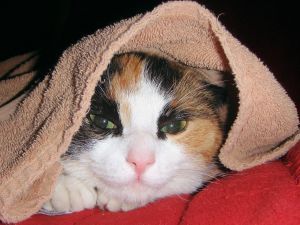Bessie Blount was an African American woman who led a life that was dedicated to helping those in need. She is considered by many to be a role model for all women and all African Americans because of her extraordinary dedication to her work.
Bessie Blount was born in Hickory, Virginia on November 24, 1914. Although not much is know about her youth, it is well known that her life long dream was to work in the medical field. Because of the racial divisions common during her time, Blount had a long road of challenges ahead of her to see her dream become a reality.
Blount decided to become a physical therapist. In order to do this, she had to move from her home in Virginia to New Jersey so she could study at the Panzar College of Physical Education. Once she completed her studies there, she attended Union Junior College to continue her studies. She then moved to Chicago in order to complete her goal of becoming a physical therapist.
By the time World War II ended, Blount was a practicing physical therapist. Many of her patients were amputees from the front lines. Blount taught the amputees how to use their feet instead of their hands to do some basic tasks. Eating, however, was almost impossible to do in this manner. Consequently, the men needed help to feed themselves which was discouraging for them. Blount saw this as an opportunity to try to invent something to help these men regain some
independence and lift their spirits.
In response to this need, Blount developed an electric feeding system that allowed the amputees to feed themselves at their own individual pace. The system delivered single bites of food to the person through a tube. When a person would bite down on the tube, another bite would come out of the tube. This tube was attached to a machine that would prepare each individual bite and send it up the tube. Patients could use this feeding system in any position, even laying down.
Blount also developed a more simple feeding system. In this system, a bowl or cup was supported by a brace that was attached to a neck brace. She came up with this idea while teaching and practicing physical therapy at the Bronx Hospital in New York.
Blount applied for a United States patent for her Portable Receptacle Support on March 29, 1948 under her married name of Bessie Virginia Griffin. Her patent was approved on April 24, 1951. It was given patent number 2,550,554.
Despite the usefulness of the inventions and the fact that both inventions could help thousands of disabled veterans, the American Veteran’s Association would not offer its support to Blount.
In 1953, on the television show “The Big Idea”, Blount presented her inventions. She was the first African American and the first woman to have ideas featured on the show. Even after this, she found very little support in the United States.
Eventually, Blount found the support she needed for her inventions in France. Once she found that support, she donated the rights to both of her feeding system to the French government. She felt she had finally proved “that a black woman can invent something for the benefit of humankind.
Blount created many other items that helped out those in need. She came up with the idea of a disposable cardboard emesis basin. She baked a mixture of newspaper, flour and water in her oven to make the basin.
She presented this idea to the United States Veteran’s Association. Once again, they refused to recognize her invention. She never had the idea patented. In Belgium, Blount’s idea can be found in many hospitals. The design has been slightly modified but, the basic design remains the same. In the United States, hospitals still use a kidney shaped emesis basin that was developed in 1913.
In 1969, Blount became a forensic scientist. In 1972, she became the chief document examiner of the laboratory where she worked. In 1977, after being turned down for a job with the Federal Bureau of Investigation, Blount became the first African American woman to train at Scotland Yard.
Blount used her skills as a forensic scientist to examine Slave Papers. These documents were dated to the pre-Civil War era. Blount has also examined some treaties between Native Americans and the United States. In addition to this work, Blount assisted various law enforcement agencies as a consultant for special investigations.
Bessie Blount officially retired in 1997, at the age of 83. Even after she retired, she continued to enjoy the rewards of her life of hard work. She was inducted into New Jersey’s Cumberland County Black Hall of Fame in 2007. In addition to this honor, she was also awarded the New Jersey Joint Legislative Commendation.


